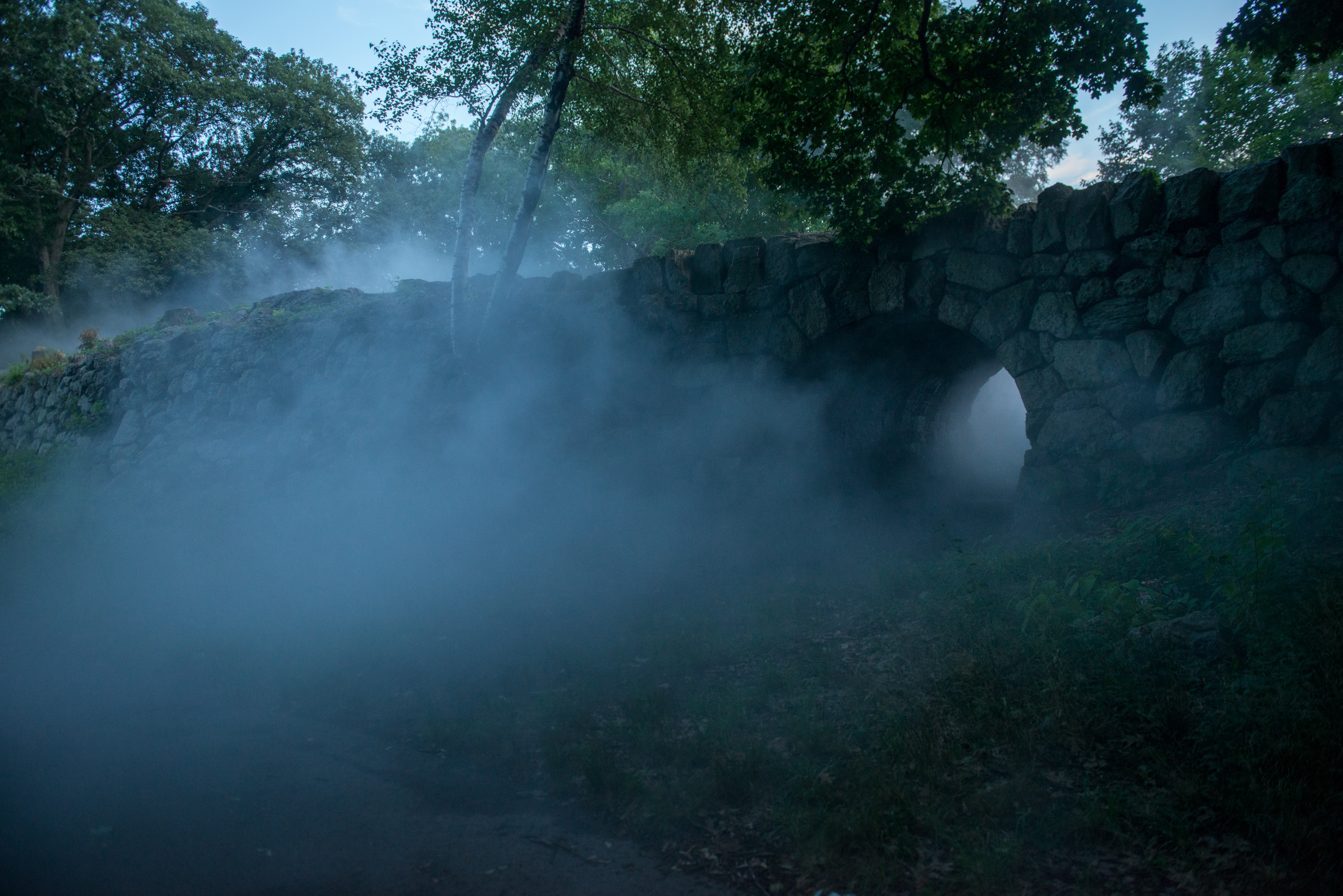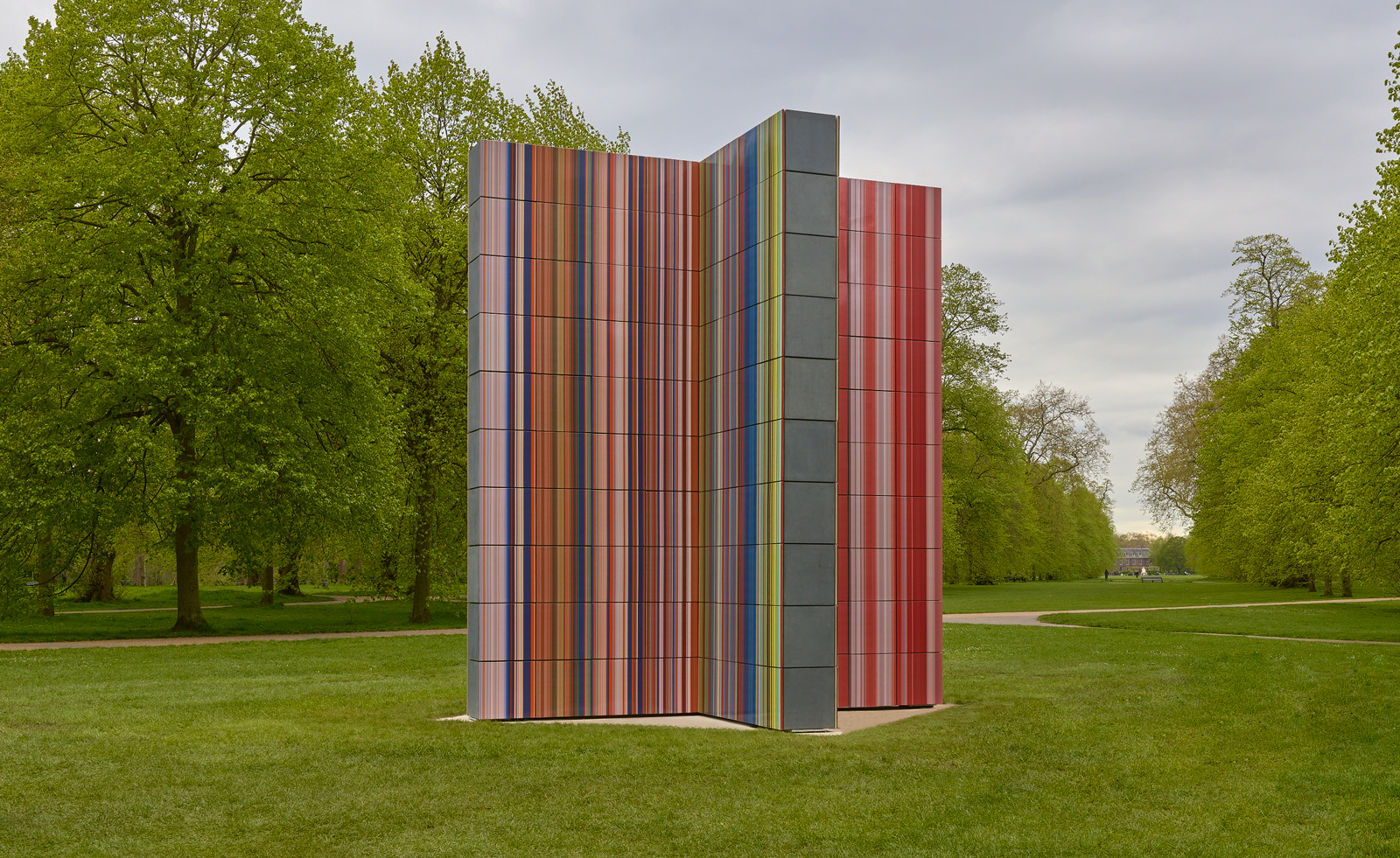Fujiko Nakaya’s fog sculptures animate Boston’s Emerald Necklace
Fog x Canopy, one of the five fog sculptures by Japanese artist Fujiko Nakaya, on view at Boston’s Emerald Necklace through 31 October. Photography: Melissa Ostrow. Film: Chris McIntosh
Those walking and running along the Emerald Necklace – Boston’s 1,100-acre chain of parks that snake throughout the city – will have a rare chance to see two creative forces in dialogue. American landscape architect Frederick Law Olmsted designed the park system more than a hundred years ago, seamlessly connecting Boston’s neighbourhoods through winding streams, ponds, and green spaces; while octogenarian Japanese artist Fujiko Nakaya has spent the past 50 years perfecting her trademark fog sculptures. In a series of five site-specific works placed throughout the Necklace, Nakaya responds to Olmsted’s natural yet engineered landscapes with manufactured plumes and ephemeral clouds of water vapour.
A job well done goes unnoticed, and the best way to encounter Nakaya’s pieces is by happenstance. ‘I just thought something weird was happening with the weather,’ a woman said to me as she stopped mid-jog to watch, and eventually with the changing breeze, be engulfed by Nakaya’s Fog x Island – a dense veil that mysteriously blew in from one of Olmsted’s ponds on a hot sunny day. Activated on the hour and running for three to eight minutes, each work is named according to its site. In addition to the island piece in Brookline’s Leverett Pond, there is Fog x Canopy in Back Bay, Fog x Beach in Jamaica Pond, Fog x Hill in Arnold Arboretum, and Fog x Ruins in Franklin Park. Each shows Nakaya’s virtuosity with the ethereal, shape-shifting medium, as she adapts her technique to fit each terrain.

Jamaica Pond at the Emerald Necklace, blanketed by mist from Nakaya's Fog x Beach.
A member of the collective E.A.T. (Experiments in Art and Technology), co-founded by artist Robert Rauschenberg, Nakaya created her first fog sculpture in collaboration with cloud physicist Thomas Mee for the 1970 World’s Fair in Osaka, Japan. Far from a clunky fog machine or cheesy water mister, Nakaya’s refined sculptural hardware consists of tiny nozzles that emit a fine vapor. Tubing is hidden as much as possible, and the larger machinery of pumps is placed far away from each work. In Fog x Hill, the nozzles are strung between two large pines, invisible from view at the bottom of the hill where one can view the rolling fog under the right wind conditions. In Fog x Beach, the nozzles are placed on a trellis in the ground, tucked away in a depression near the pond’s edge. When activated, a bowl of mist sits next to the pond, slowly wafting over it and the running trail.

Nakaya with one of the hundreds of nozzles used for each fog sculpture.
The most conspicuous work – Fog x Ruins – responds to a piece of architecture: the crumbling stone ruins of Overlook Shelter, the only building ever designed by Olmsted. After its destruction from a fire, the remains of the space were used by Boston activist Emma Lewis in the 1960s and 70s as a concert venue to host musical legends like Duke Ellington. Nakaya reincarnates this performing space, as she describes, giving fog a place to ‘dance’.

Fog x Ruins, 2018, by Fujiko Nakaya.
INFORMATION
Wallpaper* Newsletter
Receive our daily digest of inspiration, escapism and design stories from around the world direct to your inbox.
Fog x FLO is on view until 31 October 2018. For more information, visit the Emerald Necklave Conservancy website
-
 Nikos Koulis brings a cool wearability to high jewellery
Nikos Koulis brings a cool wearability to high jewelleryNikos Koulis experiments with unusual diamond cuts and modern materials in a new collection, ‘Wish’
By Hannah Silver
-
 A Xingfa cement factory’s reimagining breathes new life into an abandoned industrial site
A Xingfa cement factory’s reimagining breathes new life into an abandoned industrial siteWe tour the Xingfa cement factory in China, where a redesign by landscape specialist SWA Group completely transforms an old industrial site into a lush park
By Daven Wu
-
 Put these emerging artists on your radar
Put these emerging artists on your radarThis crop of six new talents is poised to shake up the art world. Get to know them now
By Tianna Williams
-
 Inside Jack Whitten’s contribution to American contemporary art
Inside Jack Whitten’s contribution to American contemporary artAs Jack Whitten exhibition ‘Speedchaser’ opens at Hauser & Wirth, London, and before a major retrospective at MoMA opens next year, we explore the American artist's impact
By Finn Blythe
-
 Frieze Sculpture takes over Regent’s Park
Frieze Sculpture takes over Regent’s ParkTwenty-two international artists turn the English gardens into a dream-like landscape and remind us of our inextricable connection to the natural world
By Smilian Cibic
-
 Harlem-born artist Tschabalala Self’s colourful ode to the landscape of her childhood
Harlem-born artist Tschabalala Self’s colourful ode to the landscape of her childhoodTschabalala Self’s new show at Finland's Espoo Museum of Modern Art evokes memories of her upbringing, in vibrant multi-dimensional vignettes
By Millen Brown-Ewens
-
 Wanås Konst sculpture park merges art and nature in Sweden
Wanås Konst sculpture park merges art and nature in SwedenWanås Konst’s latest exhibition, 'The Ocean in the Forest', unites land and sea with watery-inspired art in the park’s woodland setting
By Alice Godwin
-
 Pino Pascali’s brief and brilliant life celebrated at Fondazione Prada
Pino Pascali’s brief and brilliant life celebrated at Fondazione PradaMilan’s Fondazione Prada honours Italian artist Pino Pascali, dedicating four of its expansive main show spaces to an exhibition of his work
By Kasia Maciejowska
-
 John Cage’s ‘now moments’ inspire Lismore Castle Arts’ group show
John Cage’s ‘now moments’ inspire Lismore Castle Arts’ group showLismore Castle Arts’ ‘Each now, is the time, the space’ takes its title from John Cage, and sees four artists embrace the moment through sculpture and found objects
By Amah-Rose Abrams
-
 Gerhard Richter unveils new sculpture at Serpentine South
Gerhard Richter unveils new sculpture at Serpentine SouthGerhard Richter revisits themes of pattern and repetition in ‘Strip-Tower’ at London’s Serpentine South
By Hannah Silver
-
 Peter Blake’s sculptures spark joy at Waddington Custot in London
Peter Blake’s sculptures spark joy at Waddington Custot in London‘Peter Blake: Sculpture and Other Matters’, at London's Waddington Custot, spans six decades of the artist's career
By Hannah Silver